Renewable Energy vs Fossil Fuels: In 2026, Pakistan stands at a pivotal juncture in its development trajectory, facing critical choices that will reshape its economic future. The nation’s energy landscape has undergone dramatic transformations in recent years, creating what analysts describe as a “perfect storm” for renewable energy adoption while maintaining deep dependencies on imported fossil fuels.
With solar energy projected to become Pakistan’s second-largest power source by 2026, contributing an estimated 8,444MW to the national grid, the economic implications of this shift are profound . This article examines the complex balance between these competing energy paths, analyzing how each contributes to or constrains Pakistan’s economic prosperity, energy security, and sustainable development goals as the nation navigates the challenges and opportunities of the coming year.
Table of Contents
Pakistan’s Energy Landscape: An Evolving Picture
Pakistan’s energy sector reflects a nation in transition, marked by significant contradictions and competing priorities. The country currently operates with an installed generation capacity of 44,626MW, virtually evenly split between renewable sources (50.5%) and thermal sources (49.5%) in the projected 2026 energy mix . This represents a notable shift toward cleaner energy, though fossil fuels continue to play a substantial role in meeting the nation’s power needs.
The economic burden of fossil fuel imports has been staggering, with Pakistan importing approximately US$15.9 billion worth of petroleum products annually . This dependency creates significant vulnerability to global price shocks and contributes substantially to the nation’s trade deficits and inflationary pressures. Particularly noteworthy is the transport sector’s consumption patterns, accounting for approximately 80% of the country’s total petroleum consumption in 2024-25, highlighting a critical area where diversification could yield substantial economic benefits .
| Energy Source | Capacity (MW) | Percentage Share |
|---|---|---|
| Hydropower | 11,853 MW | 27% |
| Solar Power | 8,444 MW | 19% |
| Coal | 7,920 MW | 17% |
| RLNG | 6,493 MW | 15% |
| Nuclear | 3,545 MW | 8% |
| Other Sources | 6,371 MW | 14% |
Beyond the raw numbers, Pakistan’s energy story is one of contrasting efficiencies. The country possesses substantial generation capacity, yet in June 2025, actual production stood at just 41% of total capacity at 13,744 GWh (19.1 GW) . This underutilization, particularly of expensive fossil fuel assets, represents a significant economic inefficiency with far-reaching consequences for consumer prices, industrial competitiveness, and the nation’s fiscal health.
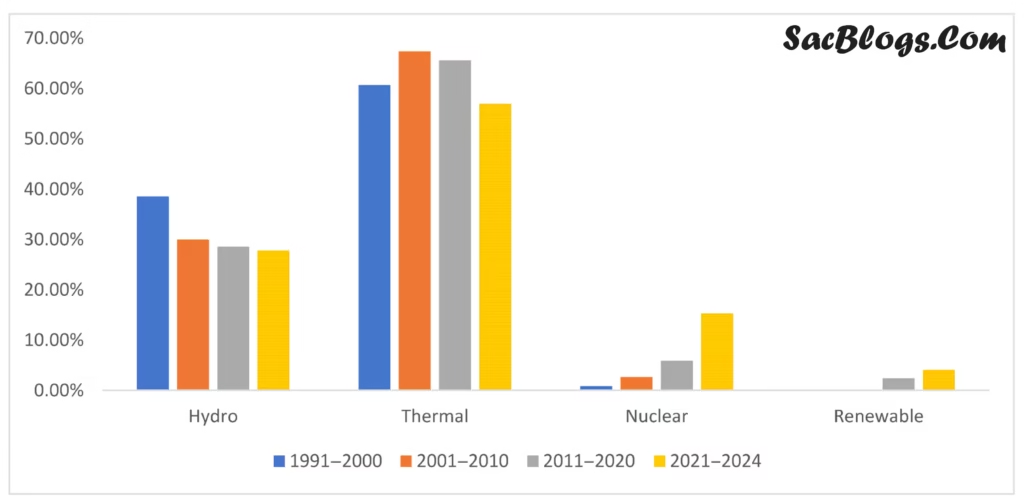
The Solar Revolution: A People-Led Energy Transformation
Pakistan’s renewable energy journey, particularly in solar power, represents one of the most dramatic energy transitions globally. What began as modest adoption under a 2015 incentive program has exploded into a mass phenomenon, with households, businesses, and farmers rapidly turning to solar solutions . This shift has been so profound that by 2026, solar is expected to contribute approximately 20% of Pakistan’s electricity, a remarkable achievement for a technology that barely registered in the nation’s energy mix a decade earlier .
Several interconnected factors created what World Resources Institute describes as a “perfect storm” for solar adoption in Pakistan. On the demand side, an unprecedented 155% hike in electricity tariffs over three years rendered grid power unaffordable for many consumers and businesses . Simultaneously, global solar panel prices fell by nearly 50% due to Chinese manufacturing overcapacity, while Pakistan exempted solar PV imports from duties and sales taxes until mid-2025 . This combination of push and pull factors made rooftop solar systems financially compelling for a growing segment of the population.
The economic implications of this solar revolution extend far beyond environmental benefits. Perhaps most notably, solar has emerged as an unexpected equalizer of energy access, bringing electricity to remote regions where grid extension had previously failed. In rural provinces like Balochistan and Sindh, where grid access remains below 70%, stand-alone PV systems have become the most common off-grid electricity source . This has enabled households in poor and remote areas to access daytime electricity for basic needs – lighting, connectivity, and cooling – services that were previously unavailable despite decades of effort through conventional energy planning.

The Fossil Fuel Dependency: Economic Burdens and Industrial Impacts
Pakistan’s relationship with fossil fuels represents a significant drag on economic development, consuming foreign reserves that could otherwise be directed toward productive investment. The Petroleum Development Levy (PDL) is expected to bring in PKR 1.47 trillion (US$5 billion) in fiscal year 2025-2026, making fuel consumption a substantial source of government revenue . While fiscally beneficial in the short term, this dependence creates perverse incentives that may slow the transition to more affordable domestic renewable resources.
The industrial sector, particularly large-scale manufacturing (LSM), has borne the brunt of these energy challenges. Accounting for roughly 8% of Pakistan’s GDP and employing millions, LSM has been contracting intermittently for more than two years, with output falling by 0.74% in the last fiscal year . Industrial leaders attribute this decline largely to rising energy tariffs, erratic fiscal policies, and frequent electricity supply interruptions that undermine productivity and competitiveness. The textile sector, long considered the backbone of Pakistan’s industrial economy, has been particularly hard hit, with current output levels lower than a decade ago despite overall economic growth .
The fossil fuel dependency also creates a vicious cycle for the energy sector itself. Pakistan maintains a surplus of fossil-fuel plants with installed capacity of 46 GW developed under the China-Pakistan Economic Corridor partnership, but these assets are now significantly underutilized . Despite this underuse, the U.S.-dollar denominated debt for these plants must still be repaid, creating what analysts describe as a potential “utility death spiral” – as more high-paying consumers defect to solar, utilities must raise rates on remaining customers to cover fixed costs, encouraging further defection .

Renewable Energy Barriers: Challenges to Green Growth
Despite remarkable progress, Pakistan’s renewable energy transition faces significant structural and policy headwinds. The most pressing challenge lies in grid integration and modernization. As Afia Malik, a senior research economist at the Pakistan Institute of Development Economics (PIDE), emphasizes, “grid modernization and optimization are fundamental for incorporating renewables into Pakistan’s energy system” . The existing grid was designed for centralized fossil fuel power plants, not the distributed and intermittent nature of solar generation, requiring substantial upgrades to manage the changing energy landscape effectively.
Policy inconsistency represents another critical barrier. Pakistan has demonstrated a pattern of shifting renewable energy policies that undermine investor confidence. Recent examples include cuts to solar net metering rates and proposed taxes on imported panels, despite previous exemptions . These policy reversals create uncertainty that deters the long-term investment necessary for large-scale renewable projects. Additionally, conflicting priorities between provincial and federal governments – with provincial authorities promoting agricultural solarization while the federal government considers import taxes to stabilize revenues – further complicate the energy transition .
Financial and infrastructure limitations also pose significant challenges. While distributed solar has flourished, the upfront costs of solar-plus-storage systems remain prohibitive for many households and businesses, despite long-term savings . Similarly, electric vehicle adoption faces affordability barriers, with EVs currently 20-30% more expensive than petroleum-based vehicles, placing them “way above the affordability limits of a low-income household” . Without targeted financing mechanisms and support for local manufacturing to reduce costs, these technologies may remain inaccessible to much of the population.

Renewable Energy vs Fossil Fuels: The 2026 Economic Assessment
As Pakistan moves through 2026, the economic case for renewable energy continues to strengthen, though fossil fuels retain certain operational advantages. The comparative assessment reveals a complex picture with significant implications for the nation’s economic development.
Economic Costs and Impacts
The levelized cost of electricity from new renewable projects has become increasingly competitive. Recent large-scale solar auctions in Balochistan secured tariffs as low as $0.039 per kWh, with a solar-wind hybrid project even reaching a record low of $0.0309 per kWh . These prices compare favorably with fossil fuel generation, especially considering that renewable energy insulates Pakistan from global commodity price fluctuations. The fossil fuel import burden directly impacts Pakistan’s current account deficit and foreign exchange reserves, creating macroeconomic vulnerability that renewables largely avoid.
From a fiscal perspective, however, the transition presents challenges. Fuel levies contribute significantly to government revenue, with the Petroleum Development Levy expected to generate PKR 1.47 trillion (US$5 billion) in FY2025-26 . The proposed carbon levy of PKR 2.5 per liter, while positioned as climate policy, is also expected to contribute PKR 45 billion to annual revenues . This creates a difficult balancing act for policymakers seeking to reduce fossil fuel dependence while maintaining essential government services.
Employment and Industrial Competitiveness
The renewable energy sector has fostered new economic opportunities through what WRI describes as “a new wave of mostly self-taught solar entrepreneurs” who have created “hyperlocal supply chains that extend into Pakistan’s interior lands” . This has generated skilled installation and maintenance jobs across the country, with Pakistani solar technicians now developing exportable skills. In contrast, the fossil fuel sector, while established, provides fewer opportunities for distributed job creation and local enterprise development.
For industrial consumers, renewable energy offers a competitive advantage through predictable operational costs. Industries facing international competition, particularly export-oriented sectors like textiles, find solar adoption “doubly beneficial – lower costs and cleaner electricity for global competitiveness” . With industrial electricity demand already falling from 31,008 GWh in fiscal year 2023 to 27,830 GWh in fiscal year 2024, largely due to solar adoption, the economic benefits for this sector are already materializing .
Energy Security and Access
Renewable energy significantly enhances Pakistan’s energy sovereignty by reducing dependence on imported fuels. The solar revolution has particularly transformed energy access in rural areas, where stand-alone PV systems have become “the most common off-grid electricity source” . For agricultural operations, solar pumps have reduced dependence on both expensive diesel units and an unreliable grid, with experts predicting that “half of the tube wells will switch to solar power, adding 5.6 GW to 7.5 GW of distributed PV capacity” .
Fossil fuels, while providing dispatchable power that supports grid stability, come with inherent supply chain vulnerabilities and geopolitical dependencies. Pakistan’s arrangements for oil imports on deferred payment from Saudi Arabia and long-term LNG contracts with Qatar create enduring external dependencies that renewables largely circumvent .

The Path Forward: Strategic Recommendations for 2026 and Beyond
As Pakistan navigates its energy future, several strategic priorities emerge that could maximize economic benefits while ensuring reliable power supply. A balanced, pragmatic approach appears essential for optimizing outcomes across economic, social, and environmental dimensions.
First, grid modernization must become an immediate priority. As renewable penetration increases, particularly distributed solar, grid upgrades are essential to maintain stability and prevent technical losses. The planned expansion of the transmission network with “an additional 5,550 MVA on 500kV, 4,710 MVA on 220kV, and 1,300 MVA on HVDC systems” represents a step in the right direction . Smart grid technologies that enable better demand management and integration of variable renewables should be accelerated to support the changing energy landscape.
Second, Pakistan should embrace a structured transition for its automotive sector. The New Energy Vehicle Policy 2025-30, which aims for “30% of all new vehicle sales to be electric by 2030” , represents a positive framework. However, implementation must address affordability barriers through targeted incentives and support for local manufacturing. The experience from solar adoption suggests that localization and workforce development will be crucial for maximizing economic benefits, with Khalid Waleed of SDPI emphasizing that “we must also upskill our local auto industry workforce” and “develop a local EV supply chain” .
Third, policy consistency and coherent governance across federal and provincial jurisdictions are essential for attracting investment and ensuring planned development. The conflicting signals on solar taxation and net metering create uncertainty that undermines investor confidence. A stable, predictable policy environment would help channel both domestic and international investment into renewable energy infrastructure, potentially leveraging Pakistan’s substantial solar resources for export opportunities in the future.
Finally, a just transition framework for the fossil fuel sector must address the potential stranded assets and workforce impacts. The underutilized fossil fuel plants, particularly those developed under CPEC with dollar-denominated debt, require careful management to avoid worsening circular debt or creating fiscal liabilities . Creative repurposing of this infrastructure, potentially for complementary services or with co-firing arrangements, could mitigate economic losses while supporting system reliability during the transition.

Conclusion: Powering Pakistan’s Prosperity
As Pakistan moves through 2026, the evidence increasingly suggests that renewable energy, particularly solar power, offers the more sustainable path to economic prosperity. The dramatic market-driven adoption of solar technologies across residential, commercial, industrial, and agricultural sectors demonstrates their economic viability and transformative potential . While fossil fuels will remain part of the energy mix in the near term, their economic disadvantages – import dependence, price volatility, and environmental externalities – make them increasingly unsuitable as the foundation of Pakistan’s energy future.
The renewable energy transition presents not just environmental benefits but tangible economic advantages: reduced import bills, enhanced energy security, job creation, and improved industrial competitiveness. With solar projected to become Pakistan’s second-largest power source by 2026 , this transition is already well underway, driven as much by economic necessity as environmental concern.
Pakistan stands at a historic inflection point. By embracing renewable energy as the cornerstone of its economic development strategy, while managing the transition thoughtfully to address grid stability, fiscal impacts, and workforce needs, the nation can power a more prosperous, equitable, and sustainable future. The choices made in 2026 will resonate for decades, determining whether Pakistan remains tethered to the volatile economics of fossil fuels or harnesses its abundant domestic renewable resources to build a more resilient and independent economic future.
Read Also: Hybrid Solar Systems in 2026 – The Smart Choice for Pakistani Homes
Frequently Asked Questions (FAQs)
1. How does solar energy impact Pakistan’s trade deficit and foreign exchange reserves?
Solar energy significantly reduces Pakistan’s need to import petroleum products for power generation, which accounted for US$15.9 billion in imports . By displacing imported diesel and furnace oil with domestically generated solar power, Pakistan can conserve foreign exchange, strengthen its trade balance, and reduce vulnerability to global oil price fluctuations.
2. Can Pakistan’s electrical grid handle the increased integration of variable renewable energy?
Grid integration presents challenges, with planned investments to add “5,550 MVA on 500kV, 4,710 MVA on 220kV, and 1,300 MVA on HVDC systems” by June 2026 . Modernization and smart grid technologies are essential to maintain stability as renewable penetration increases, particularly with distributed solar generation.
3. What is the employment potential of renewable energy compared to fossil fuels in Pakistan?
Renewable energy has created new skilled job opportunities through “a new wave of mostly self-taught solar entrepreneurs” who have established local supply chains and installation businesses across Pakistan . These distributed employment opportunities often reach rural areas where fossil fuel jobs are scarce, though comprehensive employment statistics comparing both sectors are not fully available.
4. How affordable is solar energy for average Pakistani households and businesses?
Falling solar panel prices due to Chinese manufacturing overcapacity, combined with government exemptions from duties and sales taxes until mid-2025, have made solar increasingly affordable . Financing schemes from the State Bank of Pakistan and provincial subsidies have further improved accessibility, though upfront costs remain challenging for some households.
5. What are the environmental and health benefits of transitioning from fossil fuels to renewables?
Reducing fossil fuel combustion decreases air pollution, which reaches dangerous levels in cities like Karachi and Lahore where transport contributes 33-35% of PM2.5 pollution . This transition addresses what climate experts call “a public health necessity” by reducing respiratory and cardiovascular diseases linked to fossil fuel emissions.
6. How does renewable energy improve Pakistan’s energy security?
Renewable energy enhances energy security by utilizing domestic solar, wind, and hydropower resources instead of imported fuels. This reduces vulnerability to global price shocks and supply disruptions. For remote areas, standalone solar systems provide energy access “after 60 years of trying to do this with subsidized fossil fuels” .
7. What role do policies like net metering play in Pakistan’s solar adoption?
Net metering has been a crucial driver of solar adoption by allowing consumers to offset their electricity bills with solar generation and receive credit for excess power fed back into the grid. Despite recent policy uncertainties, net metering alone is projected to contribute 7,794MW (18% of national output) by June 2026 .



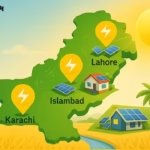
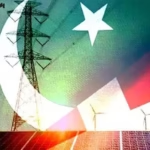
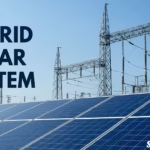
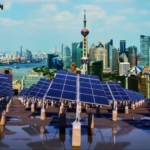
1 thought on “Renewable Energy vs Fossil Fuels – What’s Better for Pakistan’s Economy in 2026”